Two weeks ago, I visited Istanbul with some friends to explore the city's renowned food culture. Over the last few years, I've primarily written about Thai, Filipino and Southeast Asian food. Having taken a break from the content salt mine the past few months, I found myself growing playfully curious about Turkish food.
This newfound curiosity hasn't come as too much of a surprise. Having lived in Hackney, East London for the better part of three years, I've come to appreciate the area's concentration of quality Turkish eateries. One of the downsides of being so keenly interested in good food and cooking is that the vast majority of everyday food options (in a city like London) can become uninspiring. It can be hard to find a modest meal that is delicious, balanced with protein and vegetables, and relatively healthy. Places like Anatolia, (and many of London's other oçakbasi restaurants) are the solution to such dilemmas. There, for £13, I can get a meal featuring some of the most delicious meat one is bound to find in the city, a salad that has substance (i.e. not just three slices of cucumber or a palmful of rocket), a side of wholegrain bulgur, and some relatively unprocessed bread and dips to boot. Not only is the food substantive, it's made with care — an attribute that is so often lost in London's highly commercialised metropolis.
Thus begun my affection for Turkish food. Luckily, my good friend Conor, who I’ve done a number of Thai pop-ups with and who, with his partner Evi, owns and runs Evi’s in London and who perhaps knows more about food than anyone I know, is also a keen fan of Turkish cuisine - having lived in Istanbul back in the day. When he suggested we deviate from our pattern of going to Thailand for immersive food trips and travel to Istanbul for a weekend, I jumped at the idea. A few months later, I’d convinced my good friend Willy Saunds to hop aboard, and off we went.
Drawing upon Conor’s memory of some of the cities best food spots, supplemented with the infallible Istanbul Eats - the course was set for a memorable trip. Below is a recount of some of the highlights. I’ve provided links to most of the spots we visited.
Day 1 - Kebabs, pilav, and a late-night snack
We got into the city at 6:30 pm on Thursday evening, making a beeline for a taxi that would take us to our accommodation in Beyoğlu.
Dinner at Dürümzade
The first stop of the trip was the Dürümzade — the famed grill spot Anthony Bourdain visited specialising in dürüm — Turkish wraps typically filled with kebab meat. Alongside dürüm, Dürümzade offers standard kebab meals like tavuk şiş (chicken shish), çöp şiş (lamb shish) and the famed Adana kepab (kofte kebab).
The dürüms at Dürümzade are incredibly simple, which is what makes them so good. The incredibly thin lavaş style flatbread they are made from is lightly grilled over the coals and spiced with a seasoning blend by the Usta or grill master. The deliciously seasoned bread is then topped with a parsley, onion, tomato salad, and grilled meat before being rolled into a sauceless wrap. We opted for Adana dürüms, and they were as good as I imagined - bread light and thin, meat juicy and delicately but perfectly seasoned. They are nothing like exceptionally filling, aggressively packed kebab wraps that are commonplace throughout the UK and Australia.
Eating a dürüm from Dürümzade made me reflect on a realisation I have had many times when travelling to eat the best food at its source - (e.g. finding a choice pad see ew in Thailand or grilled lamb chops with chips in Athens) and that is: food, at its source, is almost always smaller in size, less seasoned, and lighter - both in terms of taste and feeling in the body. These attributes are to its benefit, not detriment - they make the food more itself and less shielded by fat, spices, and other masking agents. Perhaps this says something about our food and eating preferences in the West.
Tavluku Pilav / Chicken Pilaf
Even though each of us had a whole dürüm and shared a portion of liver kebab with salad and bread, the lightness of the food allowed us to it fit in two more dishes that evening. The first, an insistence from my friend Conor, was tavluki pilav - a typical Turkish street food pilaf dish of rice and chickpeas cooked in butter and chicken fat/stock, topped with chicken meat and Turkish ketchup. Not far from Dürümzade, we found one of the many street vendors serving this type of dish out of a small cart resembling a popcorn machine filled with an evening's worth of rice and chicken.

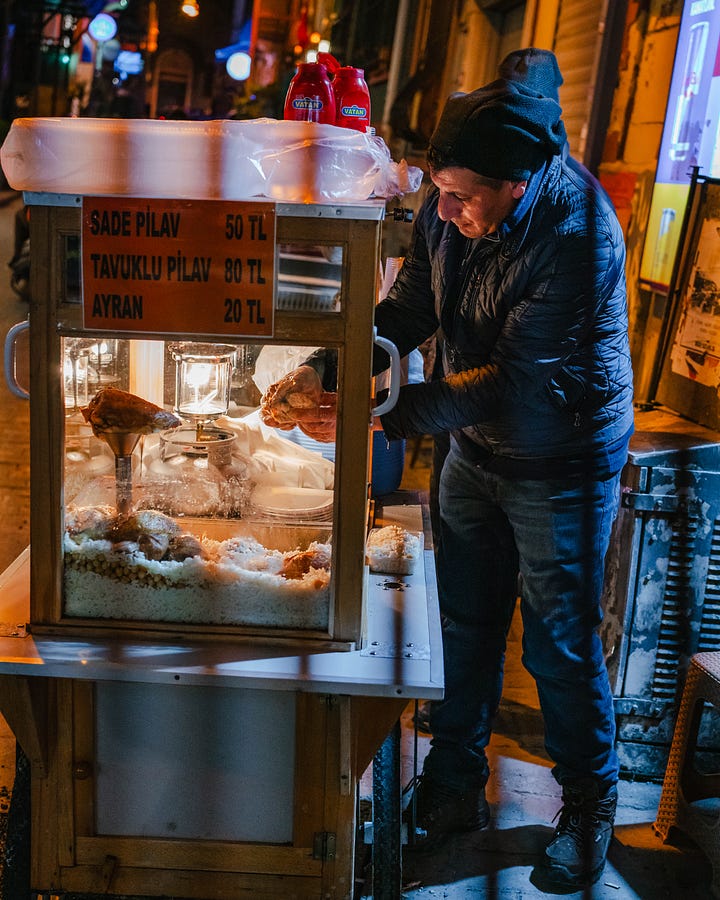
Tactically, we shared one portion of tavluki pilav. Even though I'm sure it wasn't the best the city has to offer (the chicken meat was a little dry, and the vendor was a little meagre on the chickpeas) — it was an incredibly tasty dish I wanted to eat over and over. Pure comfort food at its best - soft, flavourful, buttery, and utterly moreish.
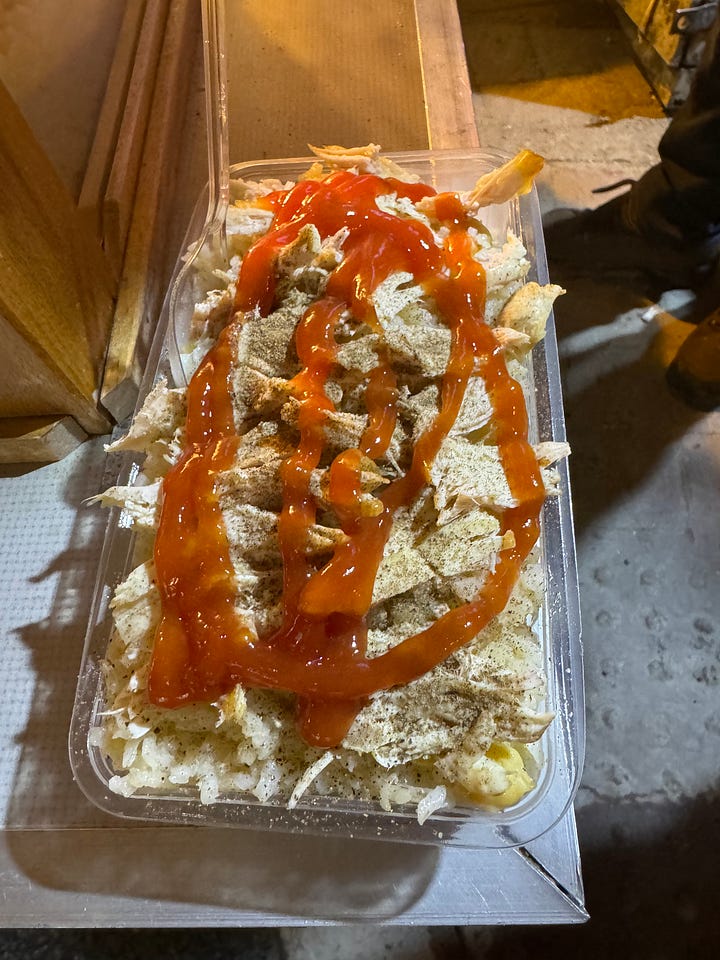

Çiğ köfte
As the night wrapped up, Will and Conor, like moths to light, were drawn to a small food joint near our accommodation, purchasing a serving of çiğ köfte— a Turkish snack consisting of a small kofte served with fresh raw vegetables, lavaş style bread and a couple of sauces. Originally, çiğ köfte was made with raw beef, hence its namesake (cig meaning raw, kofte a derivative of the Persian root kop meaning pound ground, beaten). However, in 2008, the Turkish government banned public sales of the dish due to widespread cases of taeniasis. For the Londoners out there, if you have ever had the delicious 'beef ezme' dish at Mangal II, that dish is inspired by çiğ köfte. Nowadays, çiğ köfte is often made just with bulgur, red pepper paste, parsley and spices - a vegetarian version of the more primitive classic.
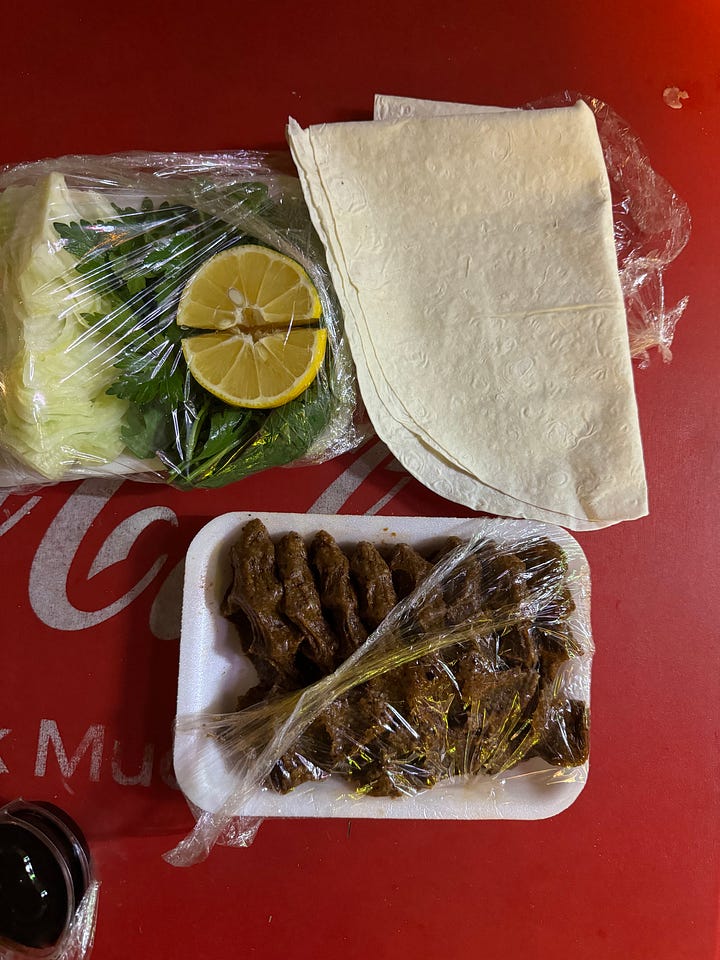
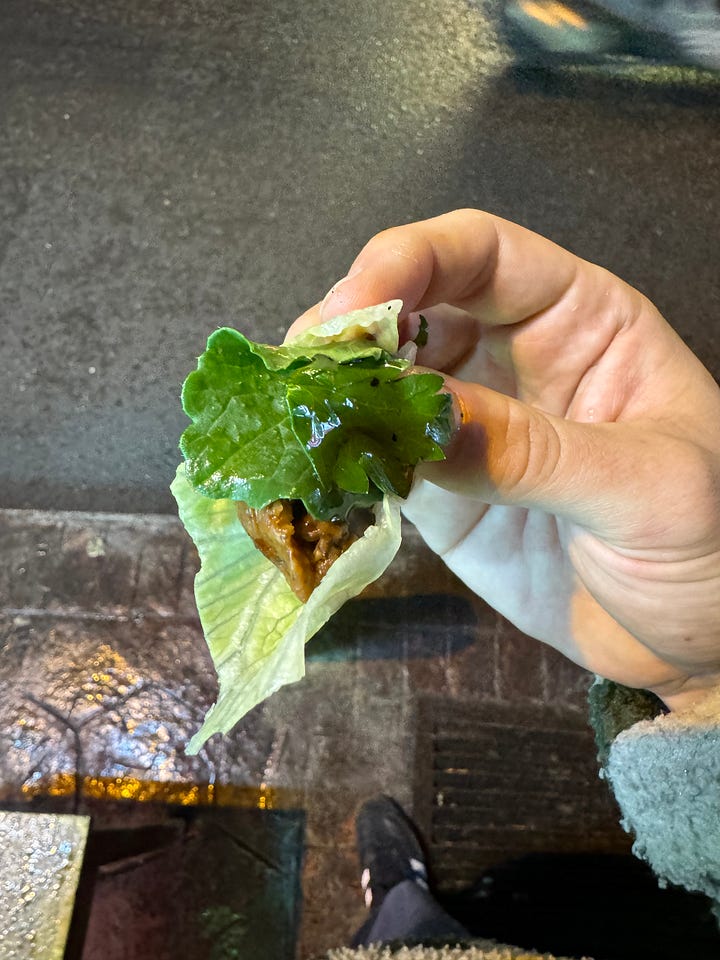
It was Conor who suggested çiğ köfte in some ways a Turkish resemblance of the Thai miang kham (a streetfod snack made by encasing local ingredients in a betel leaf), and I have to say I agree. I'm sure there aren't any historical linkages between the two dishes, but I think their similarity is reflective of how many snacks used to be produced before industrialisation — locally available, humble ingredients put together with little processing and with little effort.
Day 2 - Turkish Breakfast, Workers Food, Büryan Kebap, and the Meyhane
One of the often overlooked considerations when going on a good trip is the inelasticity of appetite. Unfortunately, eating can only feasibly be done a handful of times per day, so one must be decisive about what to eat and when!
Breakfast at Van Kahvalti Evi
Day 2 started with such a frame of mind. Not wanting to fill ourselves (/myself) too much with the whole day ahead of us, we went to one of my friend Conor's favourite breakfast spots, Van Kahvalti Evi - a place bringing Kurdish breakfasts to the capital. They have an amazing menu at Van Kahvalti Evi filled with different Turkish breads, cheeses, olives, tahini and molasses spreads, fresh vegetables, and classics like gözleme and menemen. Protecting our appetite, we opted to share the sucuk (a spicy, fermented Turkish sausage made from lamb, not dissimilar to chorizo) and eggs - dipping various pieces of bread into the mixture. It was a delicious meal, but I regret not sampling more of the menu—next time.
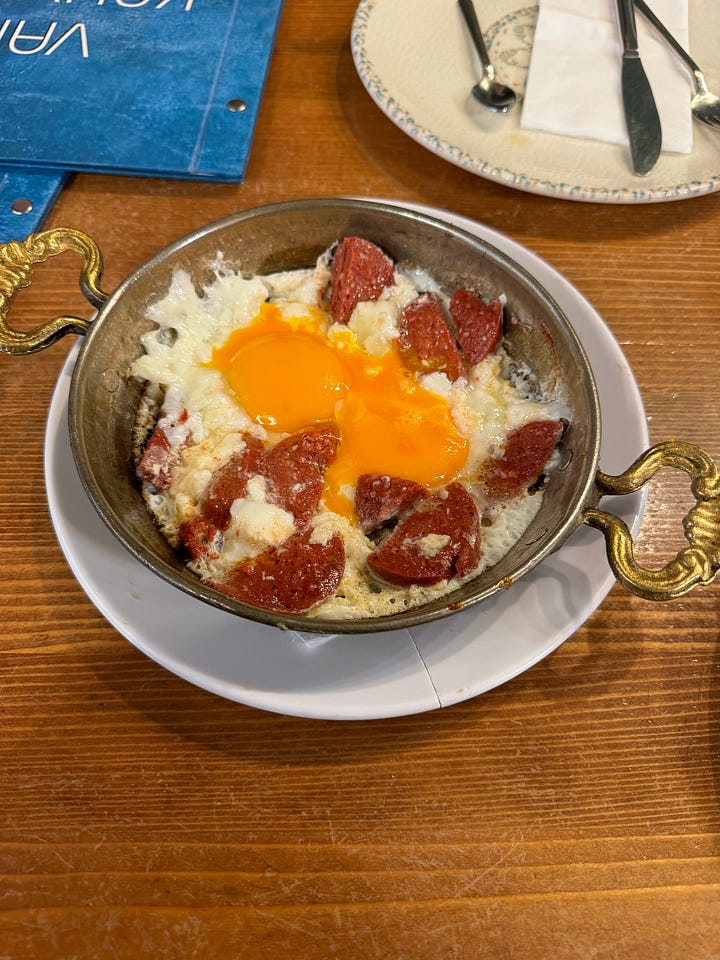
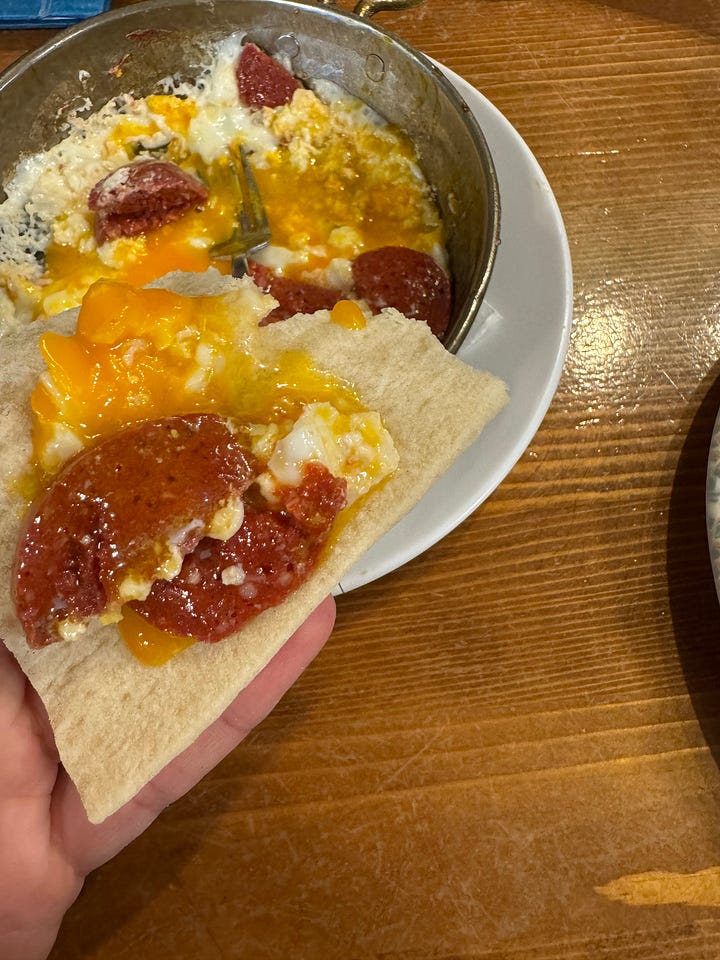
Workers Food at Şahin Lokantası
Following breakfast, we ventured to Şahin Lokantası, one of the cities' highly regarded lokantasi resutaurants, to sample various home-cooked style Turkish dishes. Lokantasis (the name translated to 'tradesman restaurant') have historically been the choice eatery for workers. Accordingly, the food they serve is more of a home-cooked style with stews, casserole-type dishes, soups, and stuffed vegetables, which are featured heavily in the day's offerings.
Upon entering Şahin Lokantası, one of the chefs behind the counter, Ali, excited at registering our foreignness, proceeded to welcome us energetically, inviting us into the kitchen to explain everything on offer for the day.
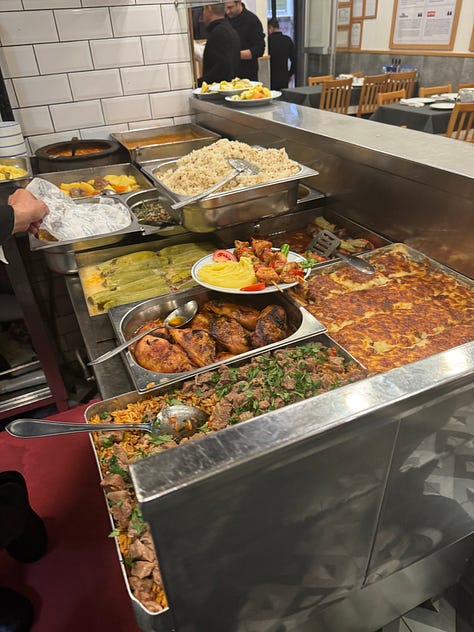
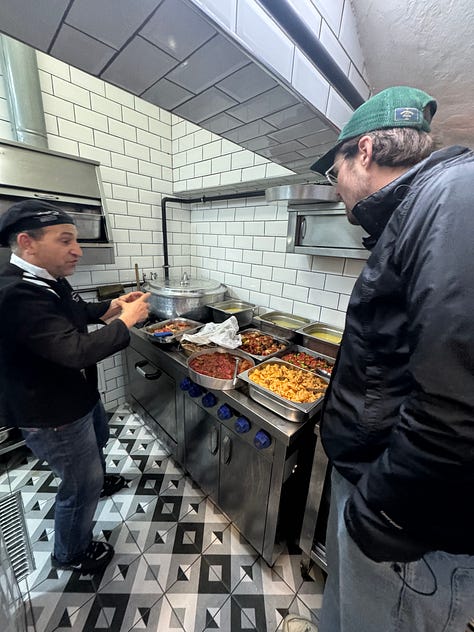
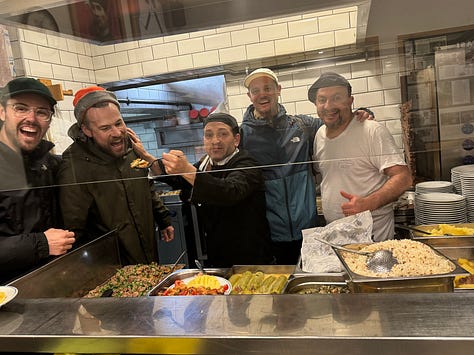
We opted for the staple mercimek çorbası (lentil soup), stuffed courgette (lamb mince) with yoghurt, a dish of roasted/baked bonito and a clear soup with beef and lamb meatballs.
With the exception of the fish, which had a few minor issues, the food was excellent, and the quality of ingredients and cooking shone through the meal. The clear soup with meatballs was perhaps the most delicious thing I tried on the whole trip. I don’t know the Turkish name for it but it looks to be similar to the Greek yuvarlakia.
Late lunch at Uğur Büryan Kebab Salonu
Following our early lunch, we walked a couple of hours across the city to kadinlar pizari, a district in Fatih that is renowned for its many restaurants serving Büryan kebaps - a type of kebab from Eastern Turkey made by slow-cooking whole lamb or mutton in a tandir, serving atop freshly made pide bread.
We opted for Uğur Büryan Kebab Salonu and ordered a round of Büryan kebaps and a type of pie made from rice, lamb and raisins (or something similar) encased in filo pasty. The Büryan kebap is a standout dish. Its crispy yet fatty succulent meat is a novelty compared to the more ubiquitous döner and adana style kebabs. Unfortunately, we suffered the effects of poor timing, arriving at the restaurant at about 4 pm, which meant we got the last of the meat, so it wasn't as juicy and fresh out of the oven as we had hoped, but it was tasty nonetheless, and I'm sure at peak times (/normal times) it would be 10/10.
Dinner at Çukur Meyhane
Having spent the first 24 hours in Istanbul sampling a wide variety of types of food, from classic kebabs at Dürümzade, to streetfood snacks like chicken pilaf and çiğ köfte, to workers' food at the lokantasi, to regional kebabs in Fatir, we decided to continue the trend of diversification opting to visit a meyhane for dinner — a type of Turkish taverna characterised by the serving of alcohol and mezze or small dishes.
Our meyhane of choice was Çukur Meyhane, a longstanding establishment in our neighbourhood. What a choice it was. Not only was the food the best we had on the trip, but the restaurant was a relic of times gone by - the type of establishment where not much has changed in 30 years, a below-ground place where local patrons smoke ciggies inside, where raki and wine flow amidst an array of fresh, exciting and perfectly cooked mezze dishes.
We ordered well at Çukur Meyhane, opting for yoghurt with celeriac and purslane; grilled red peppers; parsley, onion and pomegranate salad; grilled anchovies; köftecisi with bulgur and sumac onions, fish manti, and halva. Everything was immaculate: simple food but unique and incredibly tasty. The grilled red pepper mezze is a dish I will remember for a long time. It was the most incredible tasting thing I’ve had in a while - smoky, redolent with pepper, sour with some sort ofvinegar - just truly delicious. The anchovies also were a standout. They were fatty, laden with smoke from the grill and incredibly fresh tasting with no hint of the overt fishiness unfresh sardines or anchovies can often have.
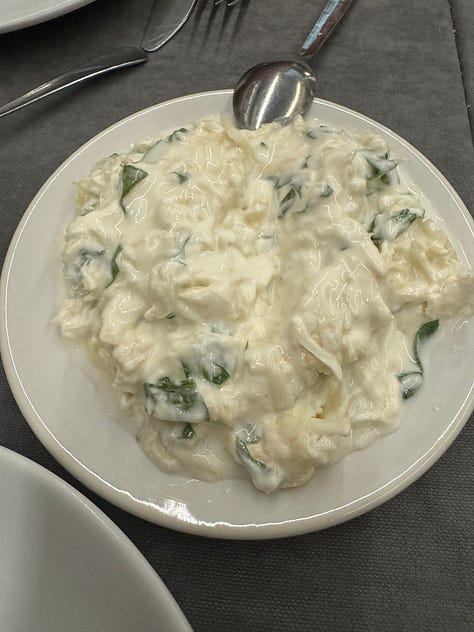
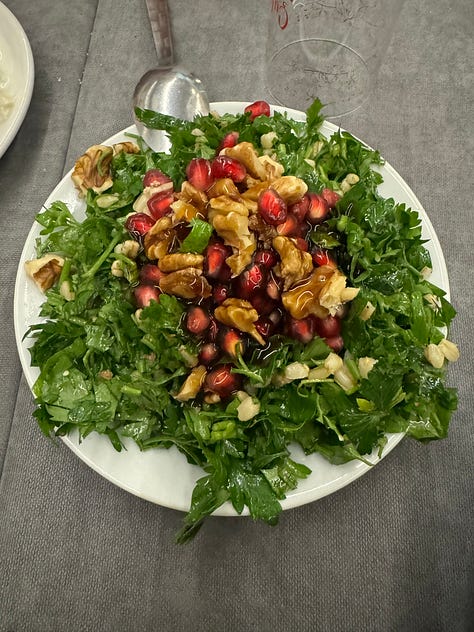
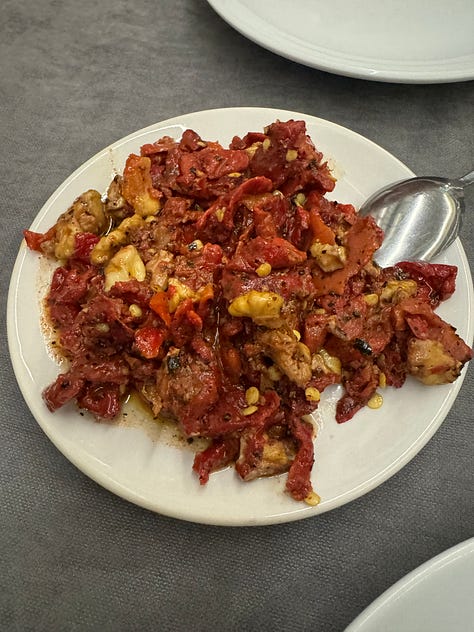
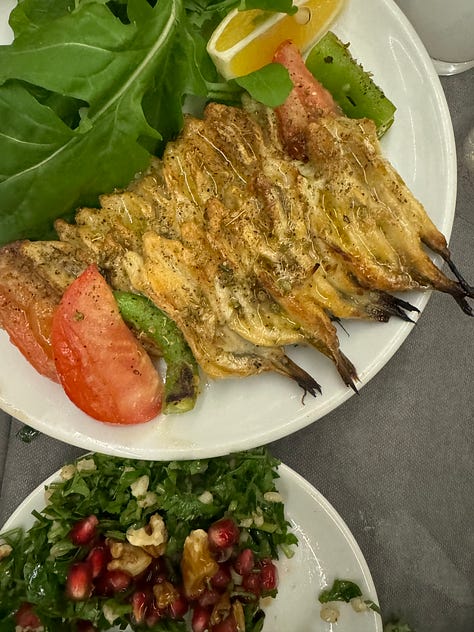

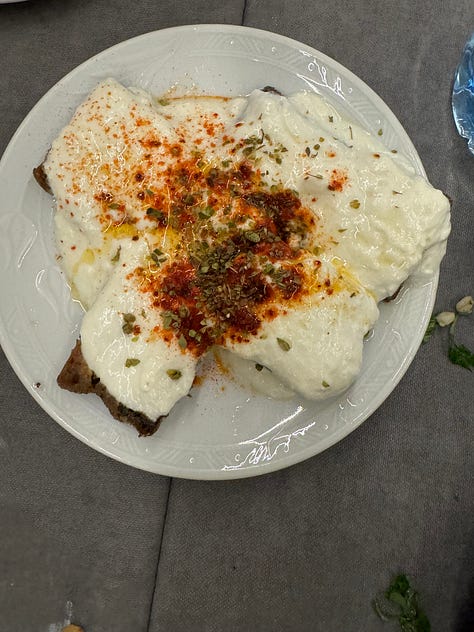
Day 3 - Regional dishes, Beyran Soup, Döner Kebab
Lunch at Çiya Sofrası
On our third day, we caught the ferry to the Kadikoy on the Asian side and stayed there until the evening.
Our first stop was Çiya Sofrası, a traditional Turkish restaurant by Musa Daðdeviren (author of ‘The Turkish Cookbook’ and star of Netflix’s Chef’s Table) highlighting lesser-known dishes from Turkey’s various regions.
The fare at Ciya was delightful, with interesting and tasty dishes like stuffed celeriac, chestnut, orange and lamb stew, stuffed cabbages, stuffed eggplants and tomatoes, and the most delectable, smoke-laden meatball soup.
Beyran Soup at Ayık Çorba Kebap
After lunch, my friend Conor mentioned the district we were in was famous for a type of dish from Gazantiep called ‘Beyran soup’ - a breakfast dish of slow-cooked lamb neck in a rich meat broth loaded with butter and some spices and seasonings.
Soon after, we found ourselves at Ayık Çorba Kebap, a place specialising in soups and kebabs fronted by a seasoned usta who attentively attended to the large vats of soups in front of her like a maestro, loading them with butter, portioning out individual bowls to a line of high-powered butane burners behind her that would heat single servings of soup until molten.
The soup was the favourite thing I ate in the three days that we were there. Buttery, meaty, savoury, served with freshly baked bread on the side; one of those dishes that forces a smile from your lips. I’ve since recreated it at home and it was oustanding, an surprisingly easy. Stay tuned for a recipe.
Döner Kebab at Tatar Salim
Finally, it was time to face the inevitable: the mythical döner. We heard from good authority that kadikoy had one of the best döner spots in Istanbul: Tatar Salim. When we arrived there, we were not disappointed.
Behind the main counter were an assembly of chefs attending to perfectly square hunks of meat rotating around a raging inferno powered by charcoal. Unlike the emulsified, trans-fatty, additive-laden döners that are common in the UK, US, Australia and much of Europe, Tatar Salim's döner is made the old way with real strips of lamb and beef layered with suet, then roasted for hours. The cooks at Tatar Salim expertly carve the meat with long swords, delicately slicing it from top to bottom whilst they catch the meat with a trailing wooden paddle. Nearby, a separate brigade of chefs is hard at work rolling out fresh dough to make the lavaş bread that accompanies each meal.
The döner was served with bread, pickles, a basic salad and chips. No sauce. It was fantastic. The meat was succulent and tasted like itself. Paired simply with the freshly made, ultra-thin bread, it was superb; the simplicity of it was something to behold.
Day 4 - Manti and the Ocakbaşı
Dumpling for breakfast at 1932 Cihangir Doyum Mantı
I began our final day by venturing out on my lonesome to try a plate of manti, or Turkish dumplings - an ancient Central Asian dish now a stalwart of Turkey and the Caucasus. I was fortunate that a couple of mins' walk from our accommodation was a restaurant specialising in this dish - 1932 Cihangir Doyum Mantı.
I ordered lamb manti and it was delicious. A sort of Turkish version of tortellini served with yoghurt and Aleppo chilli flakes. Comforting, savoury and moreish.
The last supper at Zübeyir Ocakbaşı
After my dumplings jaunt, we went to our final food destination of the trip - the well renowned Zübeyir Ocakbaşı — one of Istanbul’s most highly regarded grill restaurants.
At Zübeyir Ocakbaşı they know what they’re doing. The grill master sits behind the mangal in a computer chair, tending to skewers of lamb chops, ribs, koftes, tomatoes, peppers and liver - swivelling left and right to fetch seasonings, which he sprinkles deftly atop bread and the roasting kebabs.
We opted for Adana kebab, lamb şiş, lamb chops, lamb ribs, parsely and onion salad, grilled onions and ezme. The food was an exercise in simplicity and restraint - most of the kebab having been seasoned only with salt during cooking. Everything we tried was outstanding, but the highlights were the adana kebab (the best I have ever tried), the grilled onions which were smoky but sweet from partial caramelisation and the ezme - the perfect foil to the plates of rich, grilled meats.
All in all, it was an 11/10 meal - not only for the food but equally for the theatre of the mangal for which we had front-row seats.
Well, that’s a wrap. Such great times. I hope you enjoyed this recount - thanks as always for reading. Until next time.


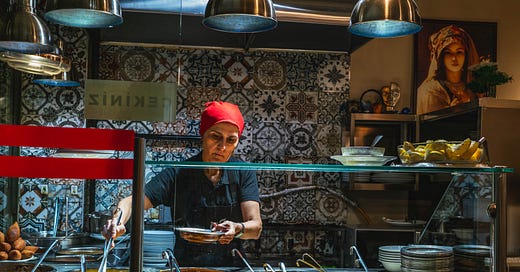




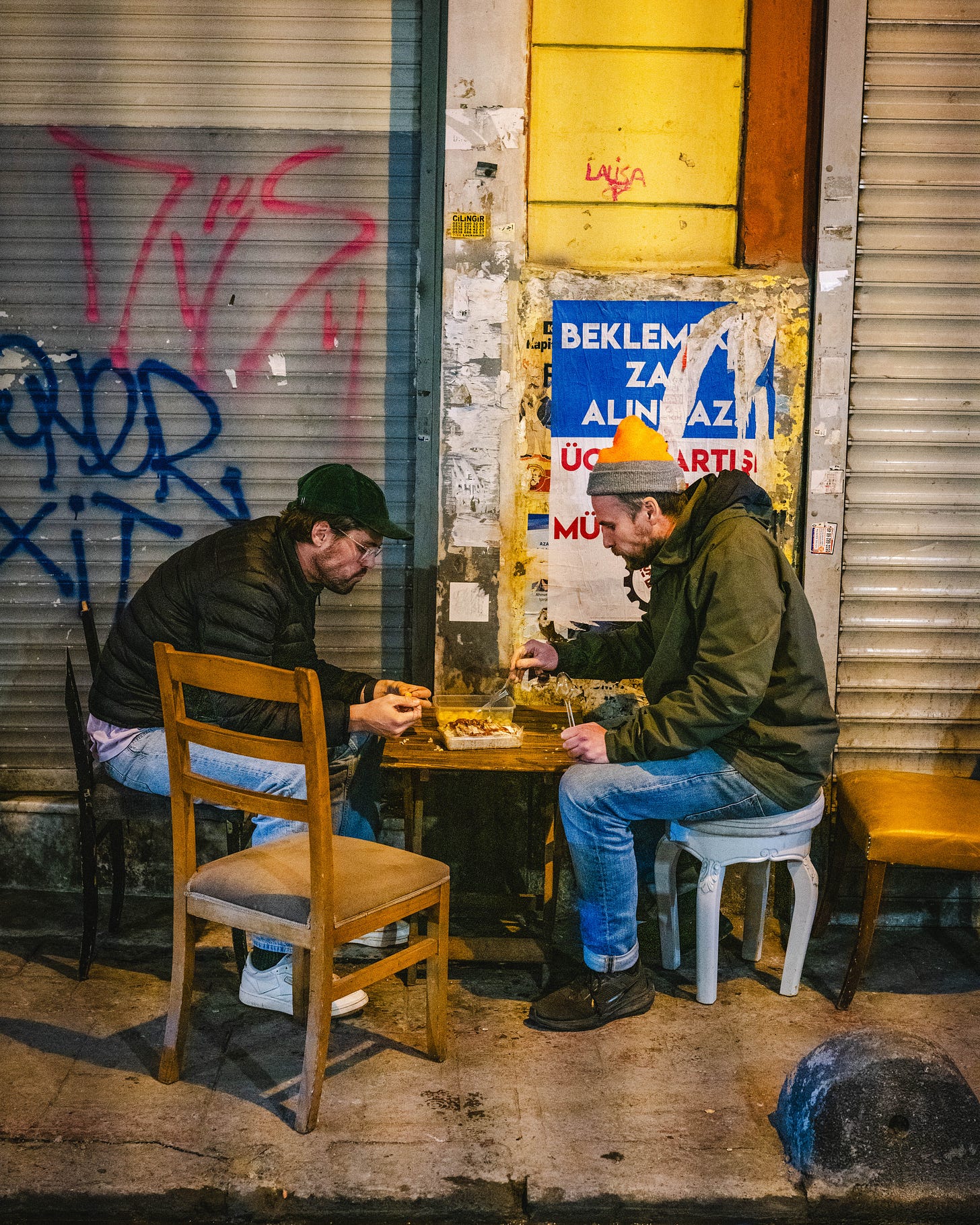


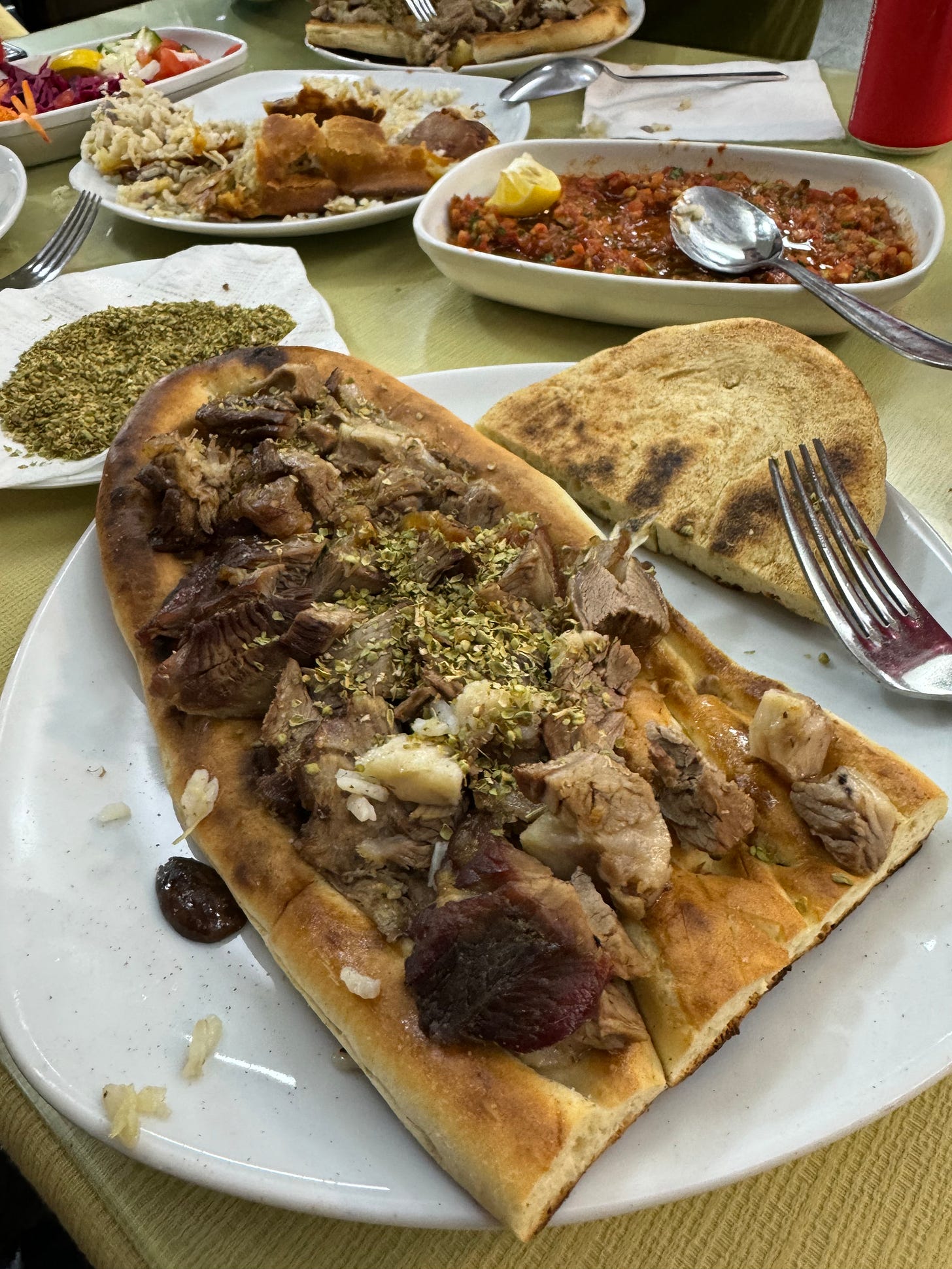
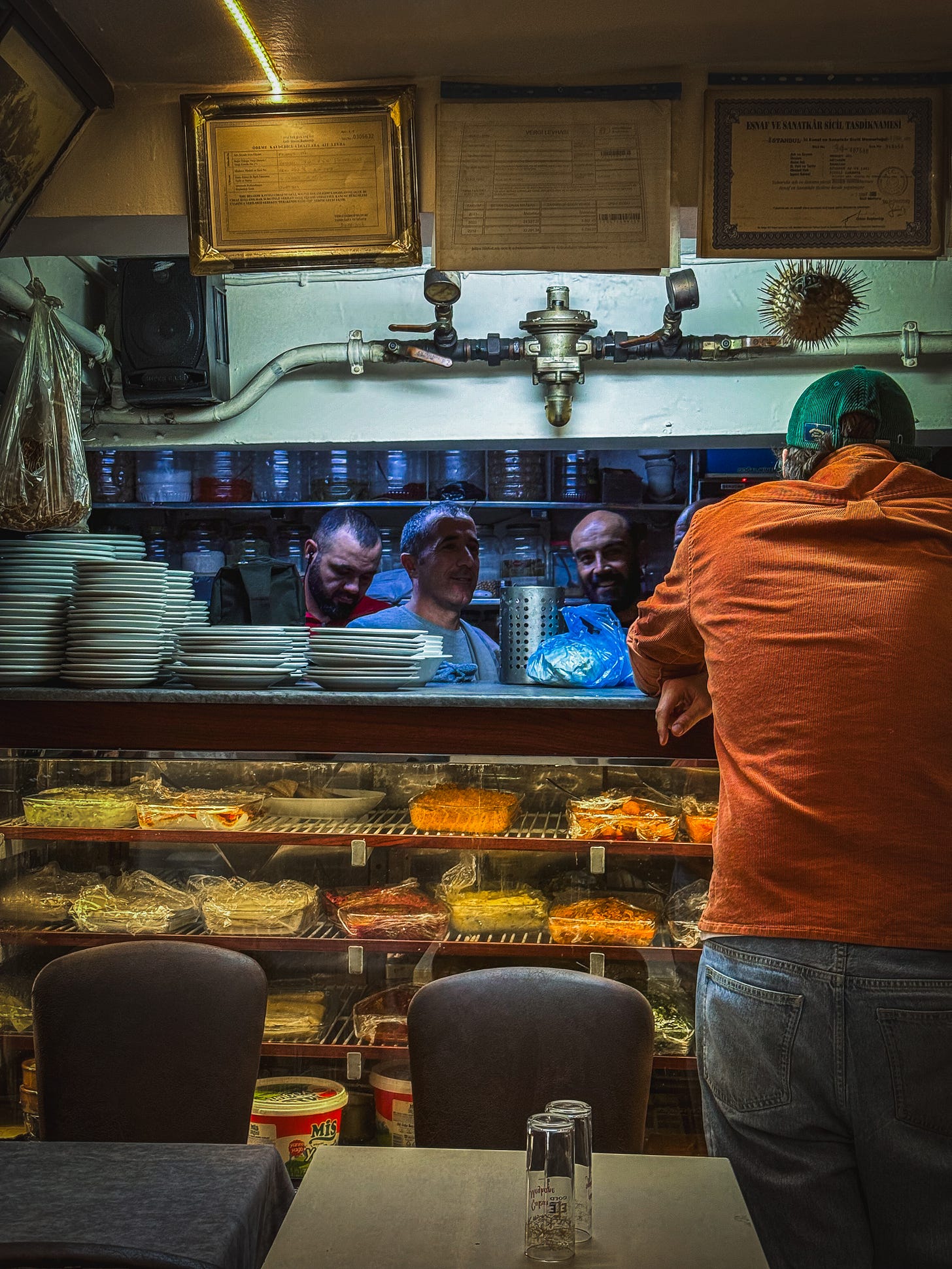
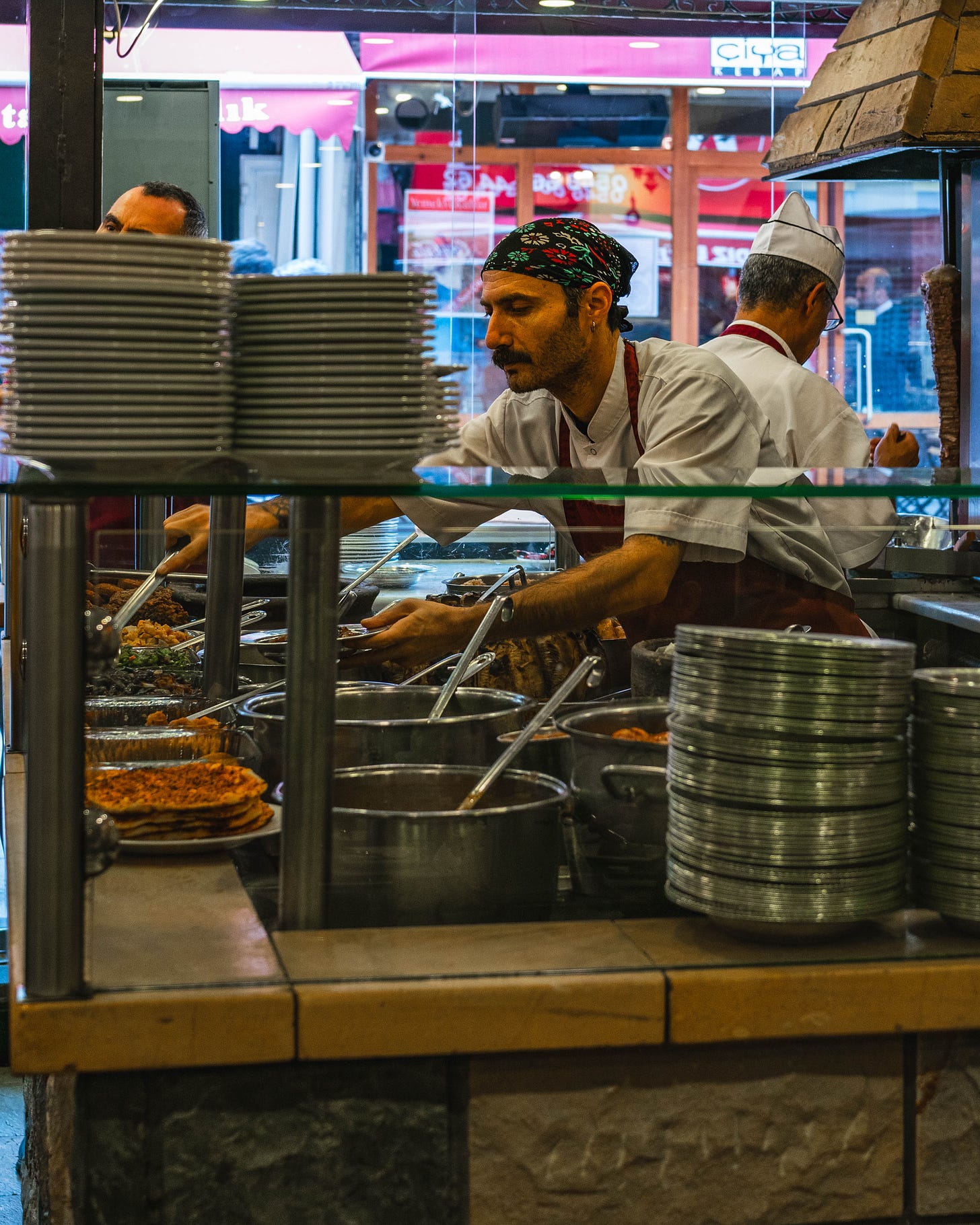
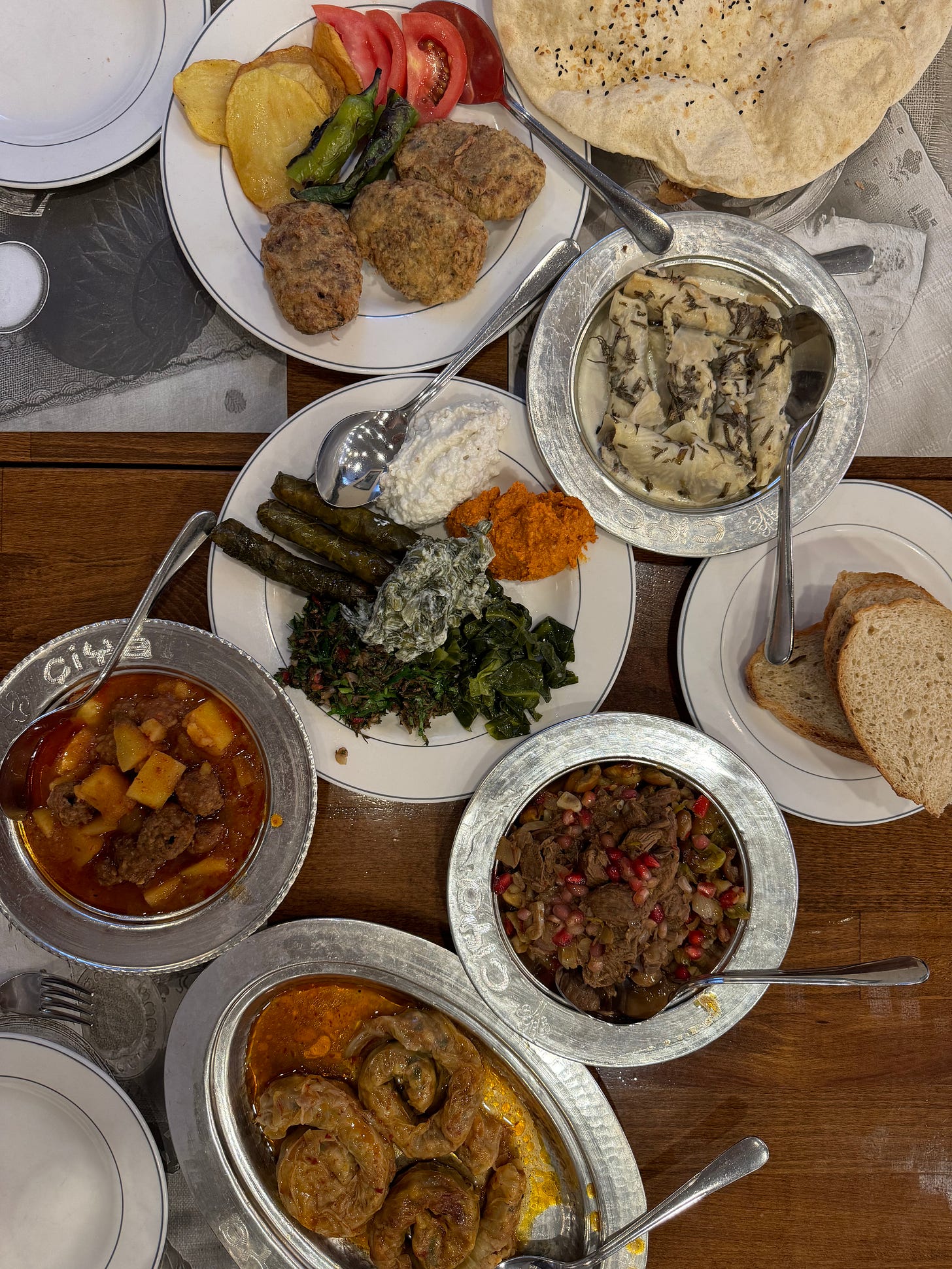
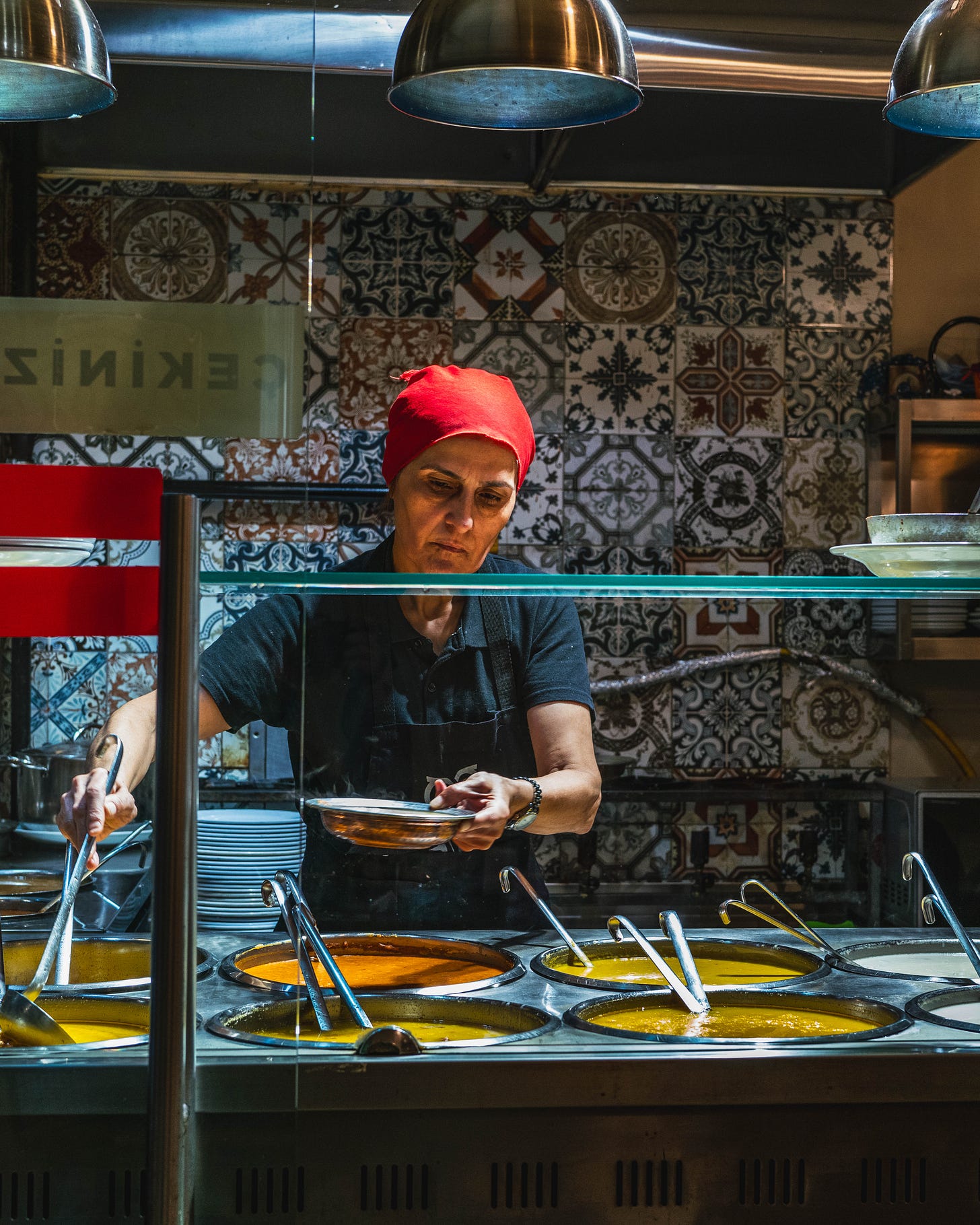
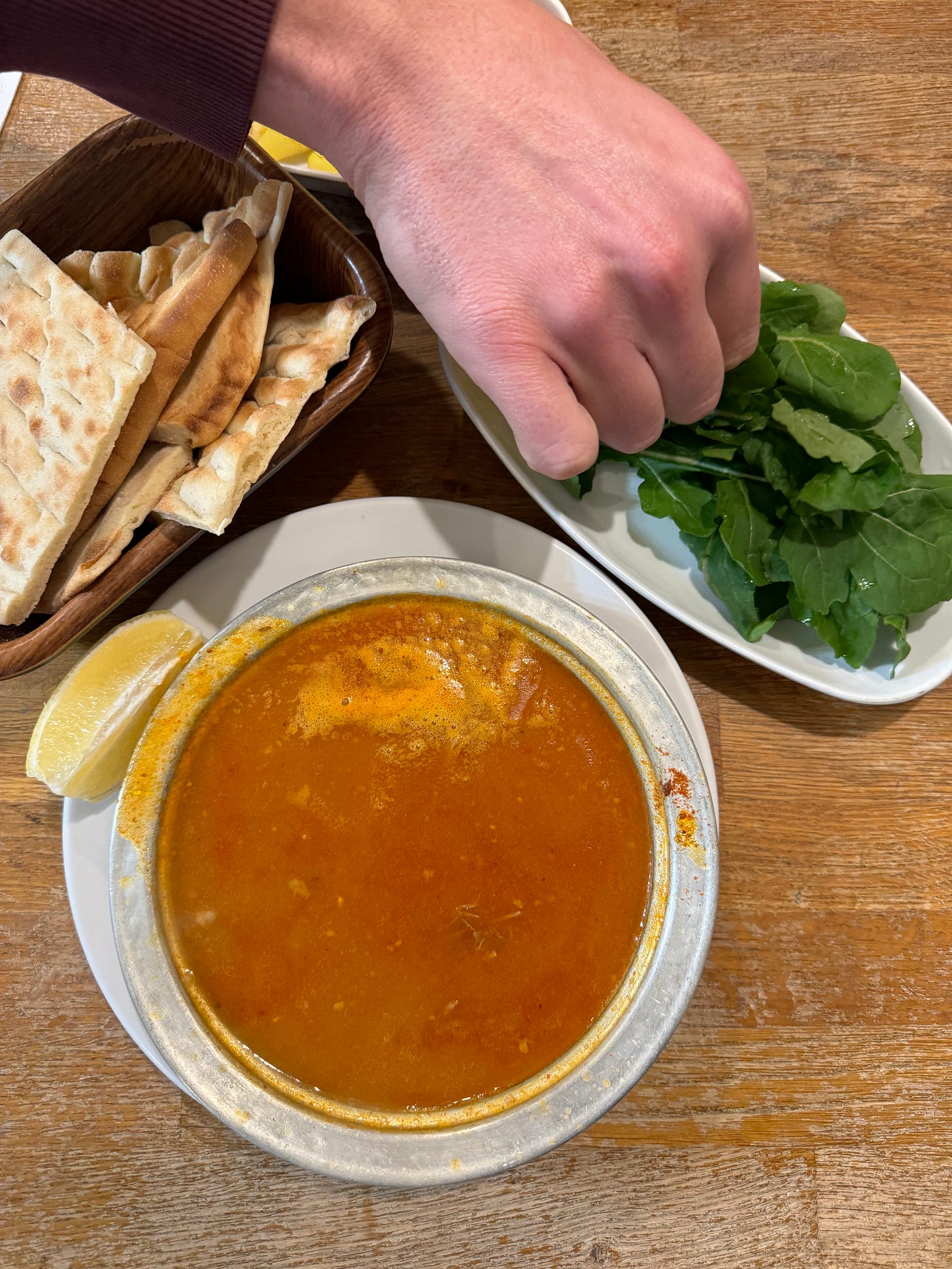
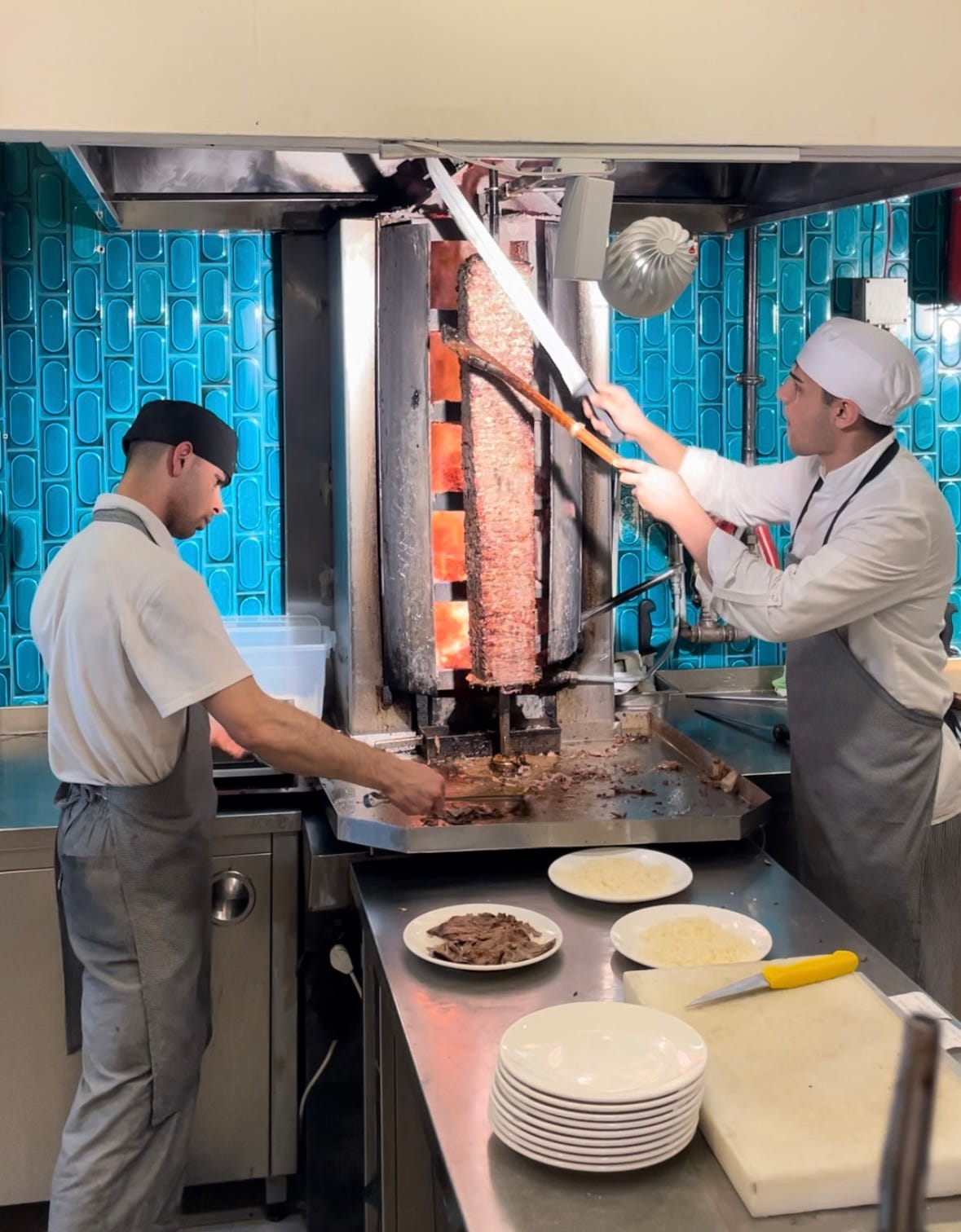
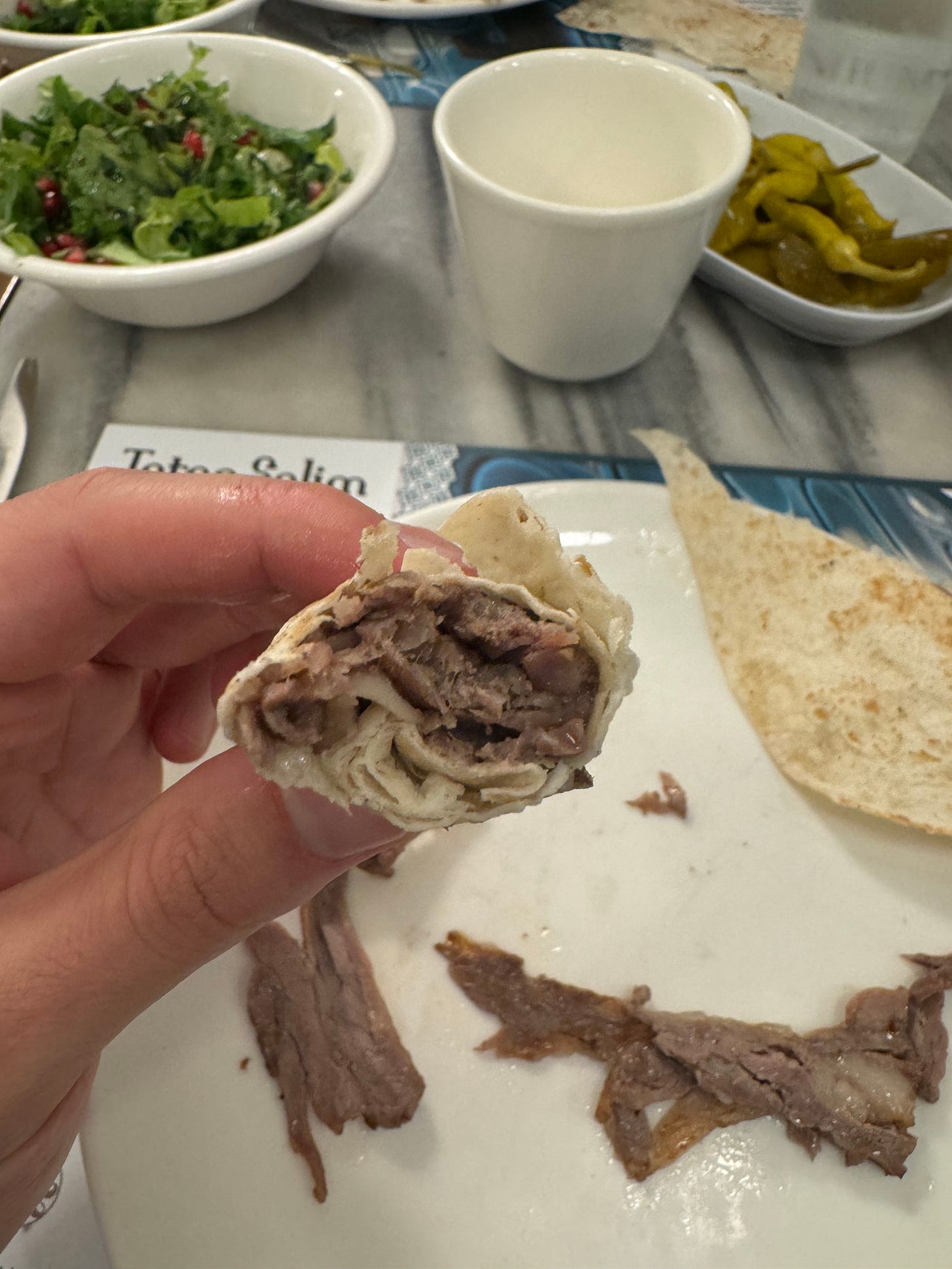


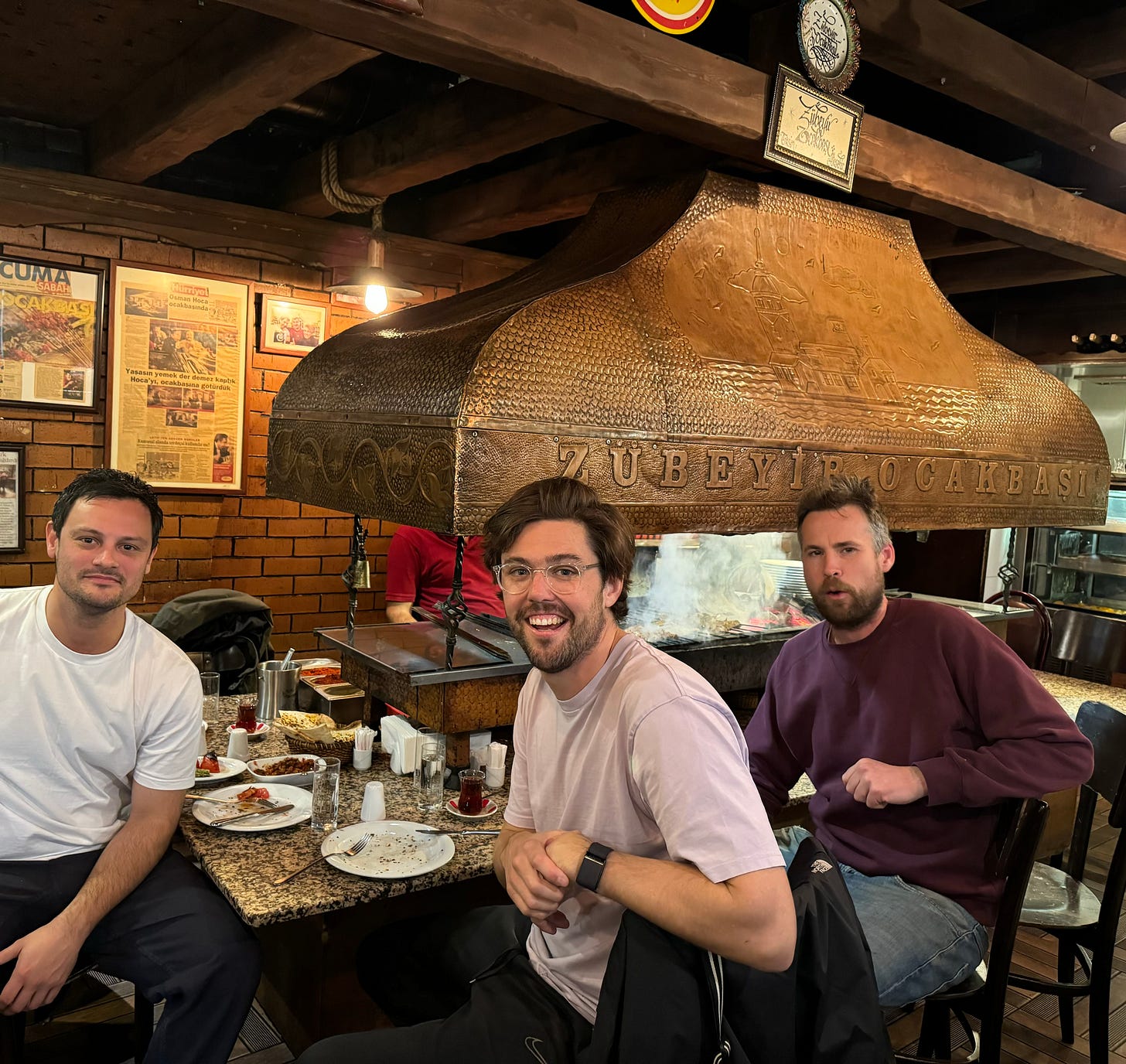
You ate at so many places in three days! While I know about the mythical doner kebab and sucuk (which looked mouth-watering), I really enjoyed reading about the other types of dishes. The fact that soup was your favorite thing to eat in 3 days was surprising, I must try the soup now! The dishes at Cukur Meyhane looked great, I took note of the red pepper mezze...something about Turkish peppers seems so unique. Will save this post for my trip to Istanbul.